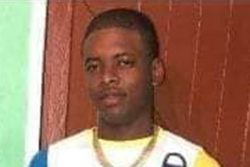The international sports calendar was buzzing last weekend with the final round of group matches in the ICC T20 World Cup in the West Indies and the USA to confirm places in the Super Eights and the 2024 UEFA Football Championship kicking off last Friday in Germany. In the midst of this feast, the couch potato sports aficionado could have flicked back and forth on the television channels and caught snatches of the 124th US Open Golf Championships held at the Pinehurst Resort & Country Club in North Carolina.
The US Open was played on the famous No. 2 course (there are nine 18-hole golf courses at Pinehurst, each identified simply by a number), which has hosted more single golf championships than any other course in America, including back-to-back US Open and US Women’s Open Championships in 2014. The iconic course, which was designed by Donald Ross and opened in 1907, was named the first-ever US Open Anchor Site, and will be the venue for the tournament in 2029, 2035, 2041, and 2047. It was the site of Payne Stewart’s third major title, shortly before his tragic death in October, 1999, which he won by one stroke over Phil Mickelson after holing a 15-foot par putt on the final hole.
On Sunday, the lore of Pinehurst No.2 was added to, with one of the sport’s most infamous collapses. No other individual discipline is geared for self destruction like the game of golf. In tennis, one shares the court and ball with one’s opponent, likewise in snooker one shares the table and balls. In golf, one’s fate lies, both literally and figuratively, in one’s own hands, as one duels the challenges presented by the course. The history of the game is layered with tales of golfers unravelling and losing strong leads, and ultimately, the tournament.
One of the better known stories is the implosion of the Frenchman Jean Van de Velde at the 1999 Open – the British Open Championship is referred to as the Open – held at Carnoustie, the famous links course in Scotland. At the commencement of the final round Van de Velde, with only one European Tour win and ranked 152nd in the world, held a five-stroke lead, which had been whittled down to three by the time he arrived at the 18th hole. On the par four hole, which he had twice birdied in the earlier rounds, Van de Velde could have made a double bogey, and still become the first Frenchman to win the Open in 92 years. To the amazement of millions of television viewers, with his name all but engraved on the Claret Jug, Van de Velde contrived to score a catastrophic triple bogey seven, thus forcing a playoff with the 1997 Open Champion Justin Leonard and Paul Lawrie, an unheralded qualifier, then 159th in the World Rankings. Clearly affected by his earlier stroke play, Van de Velde was immediately out of contention after hitting his tee shot into a gorse bush. Lawrie, who had begun the final round ten shots off the lead, claimed the title on the third hole, thus becoming the first Scot to win the Open on native soil in 68 years, and the first qualifier to win the championship since the Royal and Ancient Golf of St Andrews began giving exemptions in 1963. Today, Lawrie is a forgotten footnote to Carnoustie 1999, as Van de Velde’s heartbreak remains the story.
Rory McIlroy possesses a very impressive golf resume. The North Irishman is currently ranked number two in the world, having previously spent over 100 weeks at the top of the rankings. The former top amateur player in the world has won four major tournaments, sharing the honour of achieving that unique distinction before the age of 25, with golf legends, Jack Nicklaus and Tiger Woods. On Sunday, McIlroy had a splendid opportunity to win his first major in a decade. On the 16th hole, he held a one stroke lead, while starting a putt of two feet and six inches for par. Four hundred and ninety-six times this year, McIlroy was confronted with putts of less than three feet. He made every one of them. Routine, one would imagine. McIlroy stepped forward and putted. The ball grazed the left side of the hole and trickled past the hole. Bryson DeChambeau, trailing by one stroke and playing in the group behind McIlroy, heard the crowd’s response. The tournament was tied. The Open was open.
McIlroy regrouped and parred the 17th hole, then faced a three foot nine inches putt to finish the tournament. Another automatic stroke. This time, McIlroy hit the ball too soft, the ball slid right, touched the lip and rolled out. The crowd groaned, a two-stroke lead with five holes remaining had evaporated, morphing into a one shot deficit. On the 18th hole, DeChambeau was in trouble, 55 yards from the flag, from where he “hit the bunker shot of my life”, landing three feet, eleven inches from the hole. McIlroy, standing inside the scoring area could only watch in silence. His fate was in his rival’s hands. DeChambeau duly drilled the putt to capture the 2024 US Open.
The narrative has since focused on McIlroy’s ‘major drought’ following near misses at the 2022 Open at St Andrews and last year’s US Open at Los Angeles. This is not forgetting the epic collapse at the 2011 Masters, where his 12-under-par four-stroke lead after three rounds, disappeared in a final round cloud of 80, as he finished tied for 15th . On those occasions, McIlroy allowed himself to show disappointment, this time he didn’t hang around; quickly departing Pinehurst, declining to speak to the media. He has since announced he will take a short break from the game.
Golf imitates life. It can be a game of inches and luck. Right place, right time. Frustrated and disappointed, McIlroy need look no further than Tiger Woods (who failed to make the cut this weekend), stuck on 15 majors, and no doubt, slowly and painfully realising that his dream of surpassing Nicklaus’s 18 major titles is dissipating. This year’s Open is scheduled for 18th – 21st July at the Royal Troon Golf Club, look for the name of Rory McIlroy on Sunday’s leaderboard.









